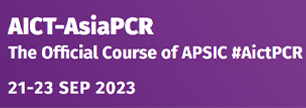


- NEWS
-
-
Scientific LibraryAcute Coronary Syndrom ASCVD Prevention Bifurcation Stenting Cardio-Oncology Congestive Heart Failure DAPT Duration Drug Coated Balloon Fractional Flow ReserveCases VideosE-LearningIndustry Insights
- LIVE REVIEW
-
 Article Link
Article Link

Intravascular ultrasound-guided drug-eluting stent implantation is associated with improved clinical outcomes in patients with unstable angina and complex coronary artery true bifurcation lesions
Chen L, Xu T, Chen SL et al.
KEYWORDS
Coronary artery bifurcation lesions; Intravascular ultrasound guidance; Long-term follow-up; Major adverse cardiac event; Stent expansion
Stenting coronary artery bifurcation lesion is associated with suboptimal clinical results. Clinical improvement by intravascular ultrasound (IVUS) guided bifurcation stenting is controversial because small-side-branch (SB), low-risk patients and false bifurcations were included in previous studies that had no exact IVUS criteria for optimal stent expansion. We sought determine whether IVUS guidance is superior to angiography guidance for patients with true and complex bifurcation lesions. Between July 2006 and July 2012, 1465 patients with unstable angina and Medina 1,1,1 or 0,1,1 coronary bifurcation lesions were prospectively studied. 310 patients in the IVUS guidance (defined as stent symmetry index > 0.7, stent expansion index > 0.9, well apposition, and no Type B/C dissection) group were paired with 620 patients in the angiography group by propensity score-matching. The primary endpoint was the rate of composite major adverse cardiac events (MACE) (cardiac death, myocardial infarction (MI), or clinically-driven target vessel revascularization) at 1-year and at the end of study after indexed procedure. Use of IVUS guidance was mainly driven by stenting technique selection and identification of lesions' specificities. IVUS criteria for optimal stent expansion were achieved in 82.9% of patients which contribute to IVUS group data assessment and the rest did not meet optimal criteria. MACE occurred in 10.0% of patients at 1-year follow-up and 15.2% at the 7-year follow-up in the IVUS group, significantly different from 15.0% (p = 0.036) and 22.4% (p = 0.01) in the angiography group, respectively. Compared to angiography guidance, IVUS guidance also resulted in a lower 7-year cardiac death rate (6.5 versus 1.3%, p = 0.002) and MI (8.4 versus 2.3%, P < 0.001). Any revascularization was also statistically lower in the IVUS group through whole study period, compared to the angiography group. Lower MACE rates were observed in IVUS guidance group in a 7-year follow-up compared with angiography guidance alone.




















